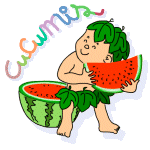Hi! This is a very interesting question.
Of course the language of the inscription is not a "pure" Latin, but a Latin modified by the time and influenced by another language. In fact late Latin inscriptions could show some writing mistakes and some difficulties in the transcription of local proper name, because of the influence of the language which is dominant in that specific area (for example, if you have found this inscription in France, its Latin could have been influenced by French pronunciation and writing).
So it is necessary to know:
1. where did you find this inscription? in which country is the churchyard?
2. how old is the inscription? Maybe you know the century...
I think that "This is the cross of Thomas McEachan and his son Donald" could be a valid translation. I justify it in this way:
HEC = HAEC (nom. sing. with CRUX)
TOUS = probably Thomas (proper name badly transcripted)
MCEUCCOND = probably McEachan (proper name badly transcripted)
FILLI = FILI (gen.)
IEUS = EIUS (gen.)


 tarafından onaylandı - 22 Şubat 2009 22:20
tarafından onaylandı - 22 Şubat 2009 22:20 tarafından onaylandı - 22 Şubat 2009 22:20
tarafından onaylandı - 22 Şubat 2009 22:20
 tarafından onaylandı - 22 Şubat 2009 22:20
tarafından onaylandı - 22 Şubat 2009 22:20